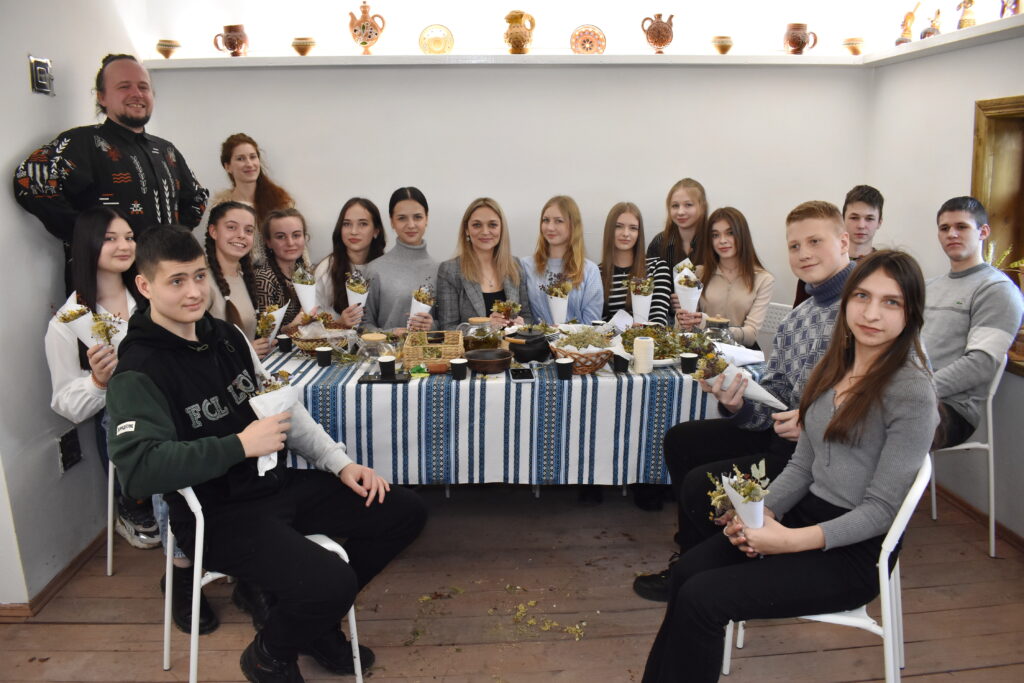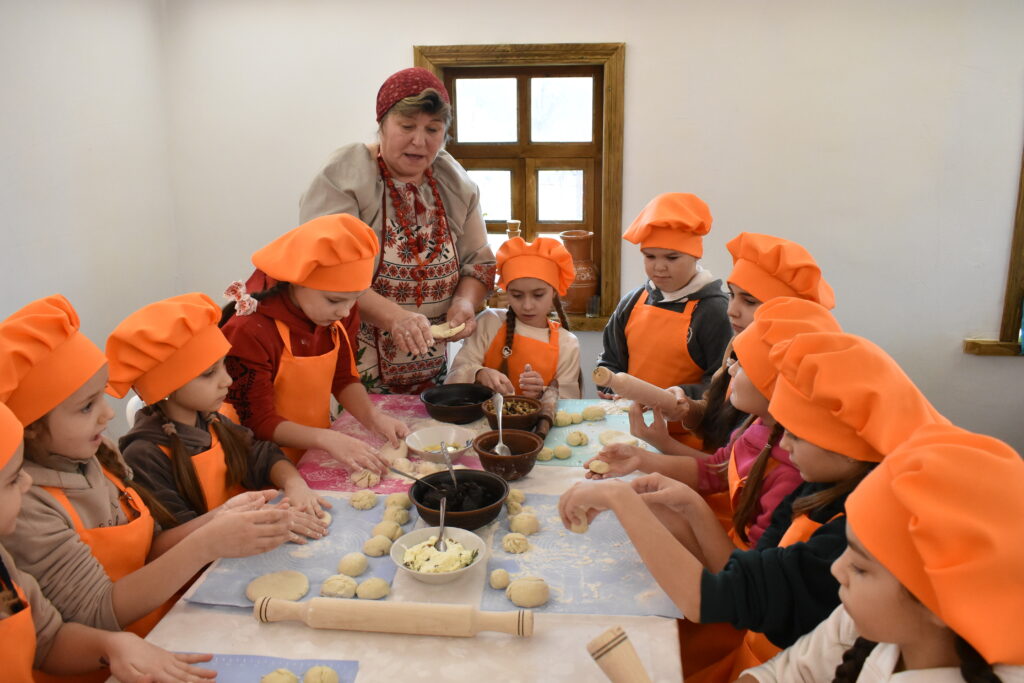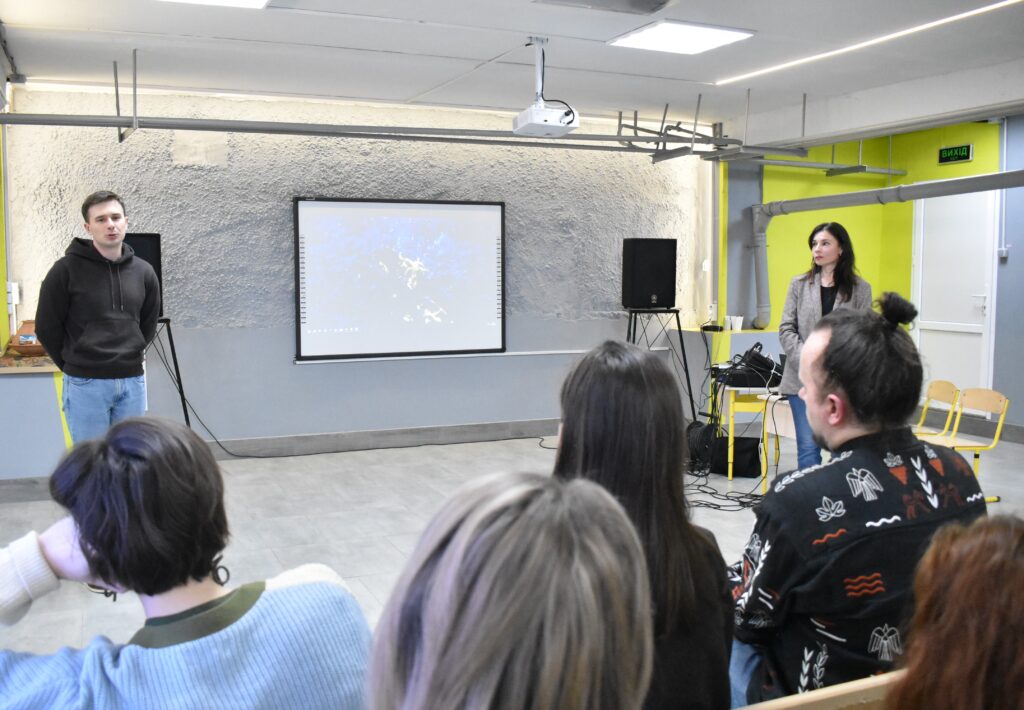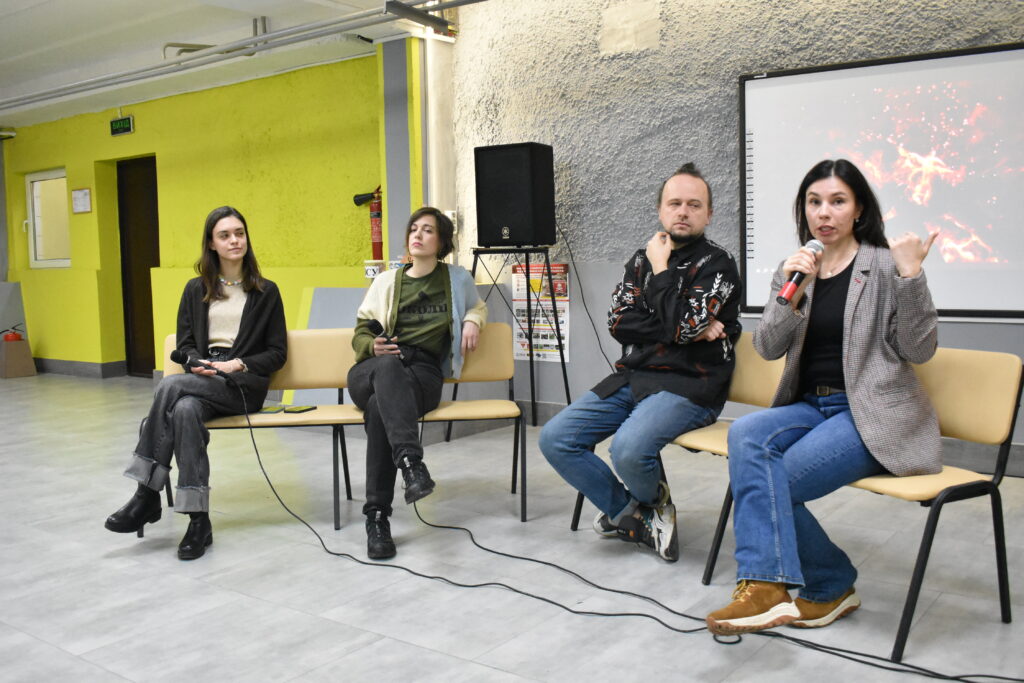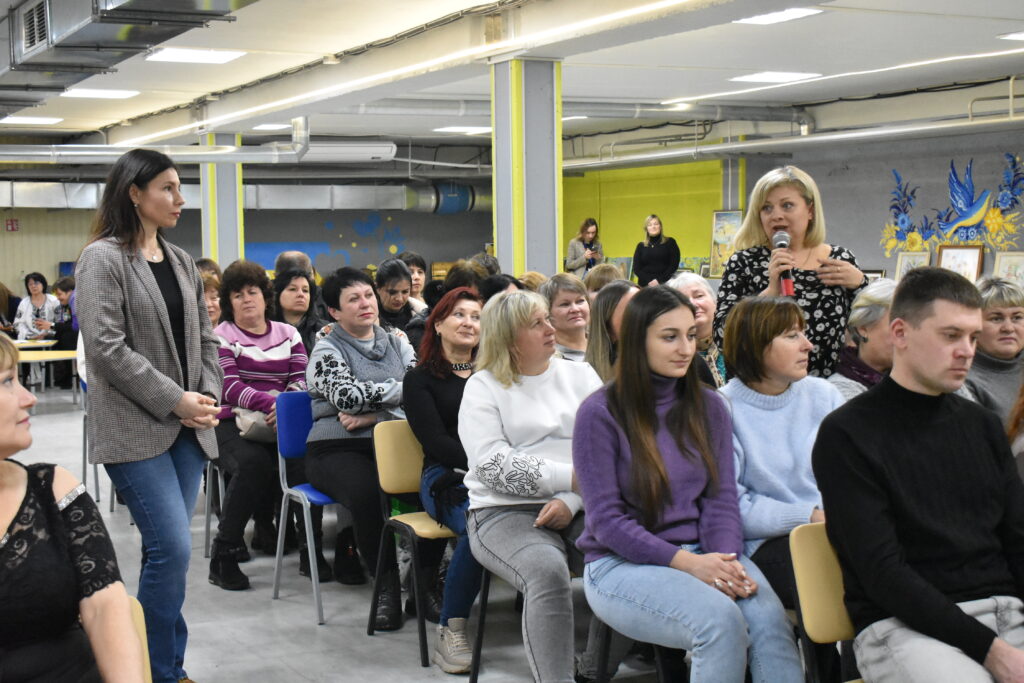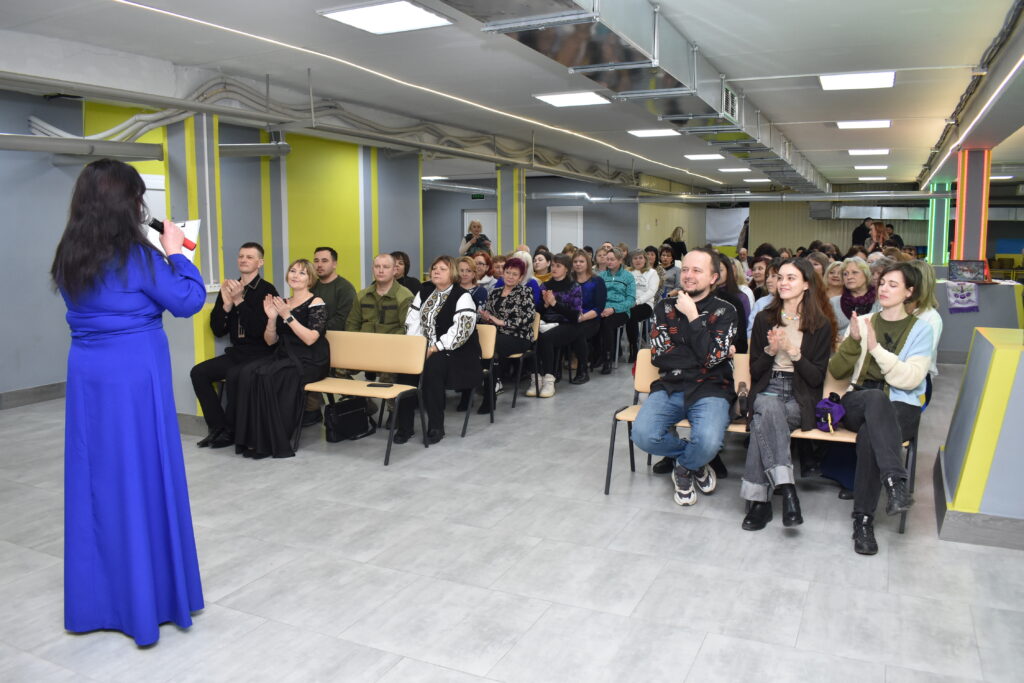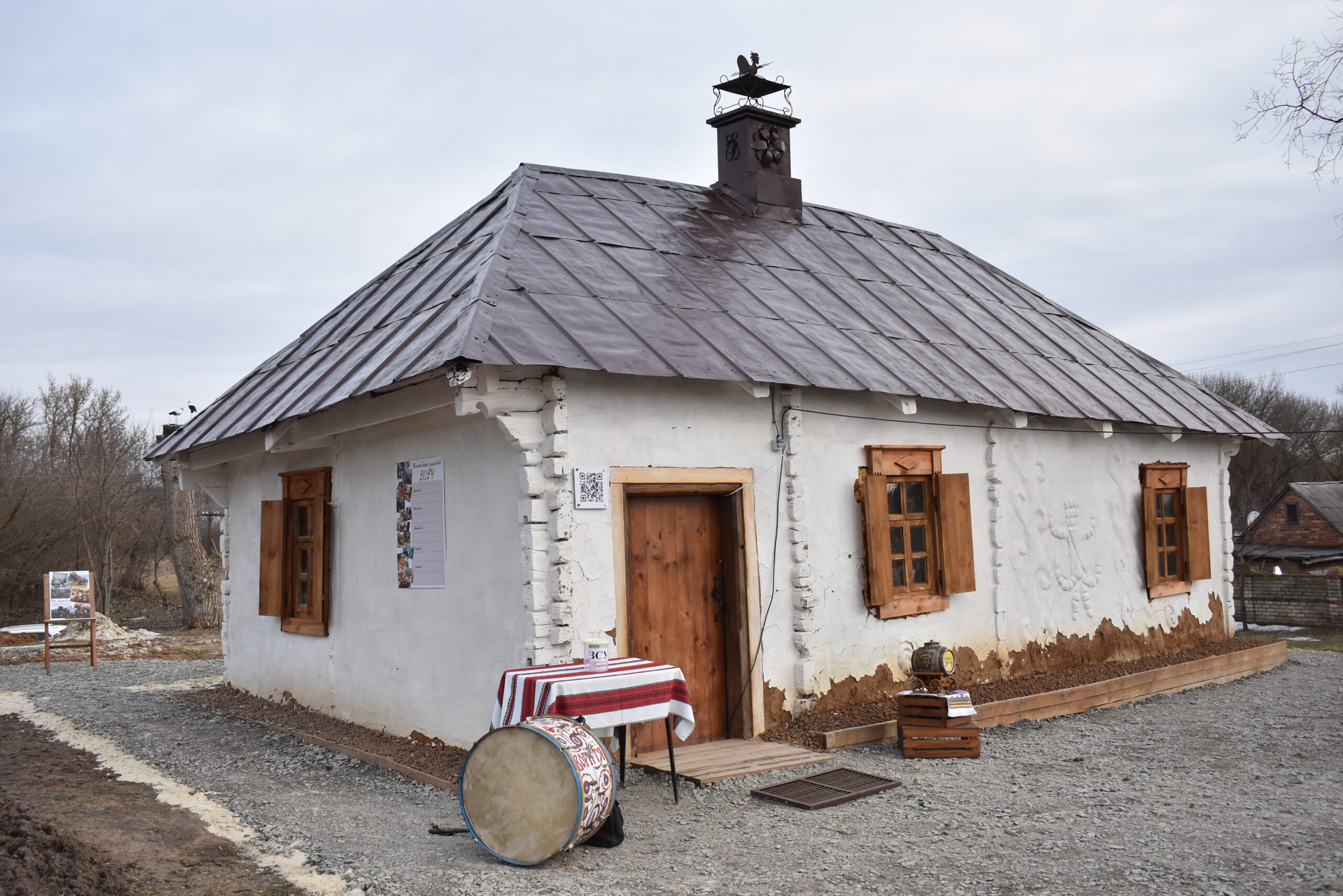
About the Center
Since the autumn of 2023, NGO Cultural Di@logue has been implementing the Na Belebni Clay Space project in the Krasnokutsk Hromada of the Kharkiv Region. The project’s goal is to create a community building center based on a 100-year-old clay house in the village of Cherneshchyna, Krasnokutsk Hromada, Kharkiv Region.
The idea of the project is based on exploring the potential of traditional community knowledge and skills (such as plastering and collective work events) and leveraging this potential to build social cohesion within the community, promote living heritage, and develop initiatives important for the processes of post-war recovery.
Na Belebni Clay Space is one of 10 unique community building centers that will open in 10 Ukrainian hromadas with the support of the Ukraine-Moldova American Enterprise Fund and Cedos.
Community building centers are accessible physical spaces where people from different social groups have the opportunity to meet and gather together for shared leisure activities, community development, collaboration, and the comprehensive realization of their human potential.
Each community received a grant of 1,000,000 UAH to create a community building center, along with mentoring support from experts in architecture, culture, communications, and social interaction.
Opening
During the opening of the center in the Krasnokutsk community, a symbolic house entering ceremony took place in the restored clay house.
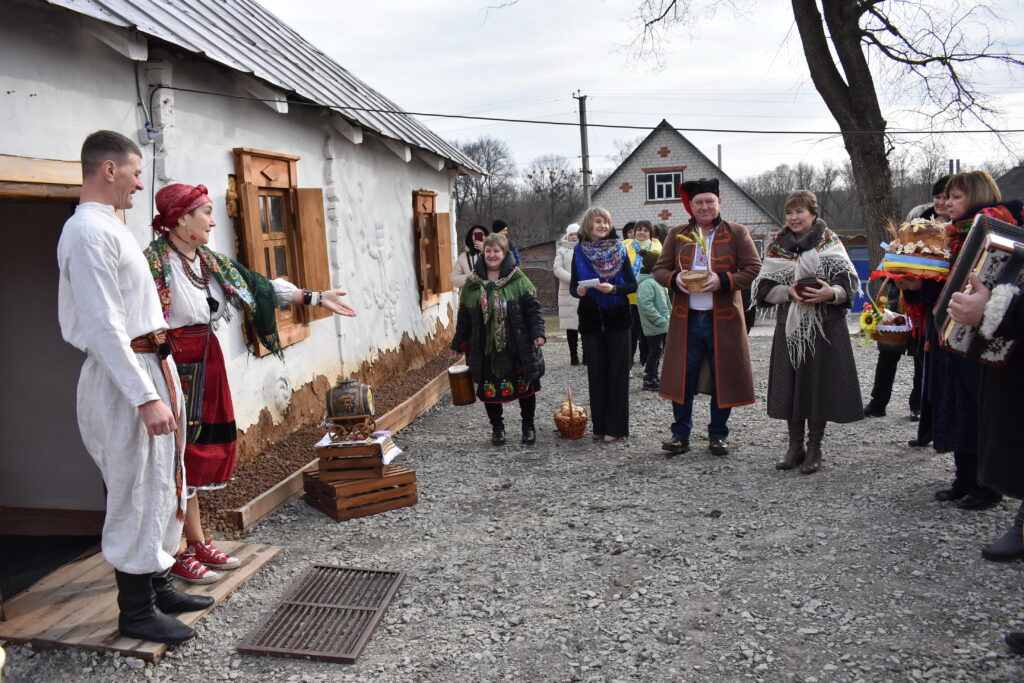
Our entering ceremony is just the culmination of a certain stage, marking the incredible efforts of the team, craftsmen, and everyone who was involved in the works, research, who supported and helped us. There is still a lot of work ahead, interaction, addressing important issues related to managing the space, and establishing transparent and clear participation mechanisms to engage a wide range of interested groups and initiatives in the development and programming of the space. At this stage, it is important for us to develop solutions that ensure the sustainable operation of the space, which belongs to the community.
Valentyna Kolontayevska, Deputy Head of the Education Department of the Krasnokutsk Village Council, Bohodukhiv District, Kharkiv Region
The project team made every effort to preserve the original appearance of the building, using traditional methods and materials. They conducted thorough research on the traditions and skills of the craftsmen, studied the local architectural features, and the use of materials. Every detail, from the roof structure to decorative elements, was carefully restored or recreated by local craftsmen using local materials. At the same time, some modern elements were added to the interior of the house, primarily to ensure flexibility and comfort in using the space. The house immediately became a space for interaction on the theme of working with heritage. It reproduces the traditional atmosphere while also being accessible and interesting for the modern visitor.
Maryna Peleshchak, project mentor, urban planner, lead specialist in the Department of Architecture and Urbanism of the Lviv City Council
During the entering ceremony in the clay house, several workshops were held. Iryna Strilets, a traditional cuisine expert, treated guests to pies and taught children how to work with dough. Liubov Popova presented her creative initiative Herbs from the Ravine, based on knowledge of local herbs passed down to her by her grandmother. Everyone had the opportunity to create their own bouquet from fragrant local herbs and enjoy a cup of aromatic, healing tea.
The community I had the fortune to meet is incredible! It felt like every house holds a talent, filled with an understanding of the importance of their roots. The clay house, where the community building space has opened, is a place where these talents are accumulated. Overall, such places for the exchange of knowledge and energy are a wonderful example for communities that aim to preserve heritage and rediscover themselves. We have come far enough to understand that human connections, both horizontal and vertical, are a reliable canvas for creating communities today.
Lyana Mytsko, project mentor, Director of the Lviv Municipal Art Center, founder of the NGO Line of Escape
On the eve of the entering ceremony, the community held a panel discussion titled Traditions of Krasnokutshchyna: Between the Past, Present, and Future, featuring opinion leaders from the Krasnokutsk Hromada: starostas, councilors, employees of educational and cultural institutions, craftsmen, the leadership of the Krasnokutsk Village Council, volunteers.
Around 70 hromada residents, together with invited speakers and project mentors, reflected on the importance of rethinking cultural heritage for self-identification and affirming local identity. They discussed possible scenarios for leveraging the potential of heritage, particularly traditional knowledge and skills (such as plastering and adobe construction), in the processes of community building, social cohesion, recovery, and post-war development of communities.
My family, unfortunately, had experience of repression. When my relatives were forcibly “torn from the country” at the beginning of World War II, fear was instilled in them. They were constantly watched and checked. No one spoke loudly, and traditions froze… That’s why today I am proud that I can openly tell my children the story of our family, pass on our traditions, and support our identity… Today, once again, the enemy is ruthlessly destroying our culture and heritage, threatening our right to be ourselves. That’s why creating conditions for passing on the knowledge and skills of local craftsmen is extremely important and timely! We must come together around the house, a space where there is a sense of belonging, continuity, solidarity, and community.
Iryna Stolova, Director of the Krasnokutsk Inclusive Resource Center
Ukrainians have demonstrated incredible strength in uniting around the defense of their land. This cohesion can be a powerful force for the development of Ukrainian communities, fostering a shared vision and joint efforts, and thus building a community. Environments for communication, acceptance, debate, and cooperation are a crucial link in this process. The revival of a century-old clay house is an example of the revival of Ukrainian identity, especially so close to the front line. Despite bombings, Ukrainians cherish what they are fighting for, striving for a dignified future that can only be created together.
Iryna Ozymok, Director of Local Economic Development at the Western NIS Enterprise Fund
It is precisely such meetings and interactions that turn a group of people living in a particular area into a community. I am very glad that we have the opportunity to help different communities strengthen themselves in this way. This is what makes our society and our democracy stronger. The Krasnokutsk Hromada, through its project, demonstrates that it is important not (only) to create closed museums that preserve material things but also to develop the skills of local craftsmen who create value. For example, skills in plastering clay houses, building stoves, or making windows, doors, and chimneys. Supporting crafts and local artisans is both the preservation of intangible cultural heritage and the support of the local economy. The development project for this house is an incredible opportunity for many stakeholders. Youth initiative, the development of a non-commercial public space (“third place”), the preservation of cultural heritage, the development of traditional crafts, intersectoral, multi-level, and interregional cooperation.
Ivan Verbytskyi, Director of Cedos
Support Cedos
During the war in Ukraine, we collect and analyse data on its impact on Ukrainian society, especially housing, education, social protection, and migration






